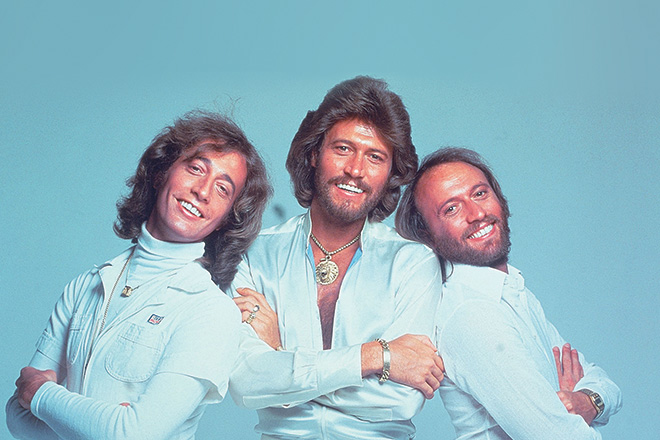“Jive Talkin’”
BEE GEES
Thank the public works department of Biscayne Bay, Fla. One of their bridges—the Julia Tuttle Causeway—inspired the song that redefined the Bee Gees’ career and became the first of their disco-era No. 1 hits.
Barry Gibb recalled that he and brothers Robin and Maurice were working on the Main Course album. “We were trying to make a comeback. It was 1975—and we were sort of out of vogue at that time,” said Gibb. “Every night, we were going back and forth to Criteria Studios from Biscayne Bay. The bridge made a clickety-clackety sound. It stayed in my head, and one night, coming back from the studio, I just started singing this thing over top of the rhythm. Robin and Maurice picked up on it, and we actually finished the song late that night.”
From its working title “Drive Talking,” the song became “Jive Talkin’.” It was an American expression the Gibbs had heard, but misinterpreted. “We thought jive talkin’ meant that you’re dancing,” said Maurice. After producer Arif Mardin explained that it was slang for bullshitting, the three retooled the song lyric to tell the story of a cruel-hearted, lying lover.
But even more significant than the lyric was the sweaty groove of the record, provided by Barry’s bridge-imitating guitar strum and Maurice’s funky bassline. In one three-minute swoop, it captured the bold new direction that they had been searching for. “There was the idea of us moving more into R&B, becoming more Americanized,” said Barry. “This was the first album since Odessa where we’d actually come to America to make it. That was on a tip from Eric Clapton. He was signed to the same company, RSO, and he said, ‘My comeback [461 Ocean Boulevard] has really worked.’ He said, ‘Why don’t you try to work in another country like America and see if you’re influenced by it?’ We did—and never looked back.”
The song, and the entire Main Course album, marked the beginning of what could also be called the group’s falsetto period. Said Barry, “The story is that during the recording of ‘Nights on Broadway,’ Arif Mardin asked me if any of us could go out there and scream some ad libs, sort of R&B style high screams. I volunteered and discovered this voice that was hidden back there. Then I started developing it, and started singing real songs with the falsetto instead of just doing ad libs.
“When I look back it’s actually something I ought to be proud of,” he said. “Brian Wilson, Frankie Valli and even Prince—they don’t make any bones about doing that. I think if you go back far enough, the first rock ’n’ roll record I ever heard was ‘Little Darlin’’ by the Diamonds, and that was falsetto. So I think in a way falsetto has been an integral part of rock ’n’ roll.
I think it’s nice to be one of those falsetto voices that’s quite well known.”
When it came time to release the single to radio, the Gibbs indulged in a little creative marketing subterfuge, sending out the discs in plain white sleeves with no information. They had employed a similar tactic in 1967 when they released their debut single, “New York Mining Disaster 1941.” Back then, they were trading on rumors that it was actually a new Beatles record. In 1975, they simply wanted to be heard without any preconceptions of their past.
The scheme worked. “Jive Talkin’” became their first No. 1 hit in four years—and blew open the doors for the platinum-plated Saturday Night Fever era.
–Bill DeMain




comment closed